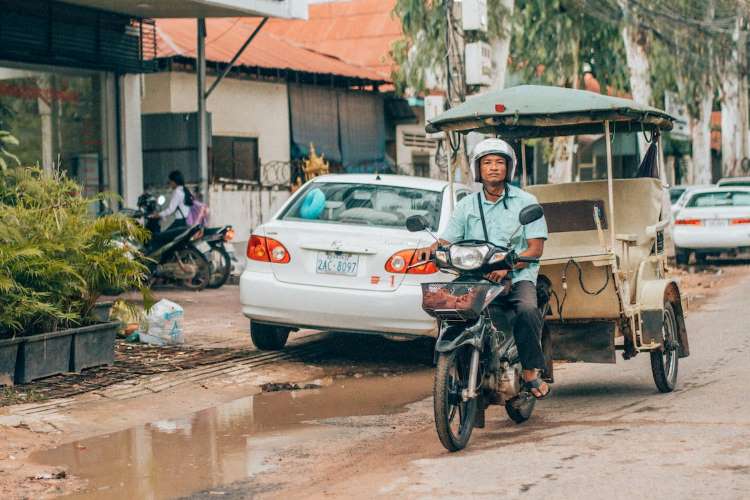Climate change is no longer a distant spectre looming over future generations; it is an immediate threat demanding urgent action. Traditionally, discussions on climate change evoke images of melting polar ice caps or burning forests. Yet, as recent reports suggest, the epicentre of this crisis and its solutions lies where the majority of humanity resides and thrives: our cities.
Cities, bustling with over 80% of the global GDP and the bulk of the world’s population, face an existential threat from climate change. A report commissioned by the Mayor of London paints a grim picture of the future: intensified heatwaves, torrential rainfalls, flash floods, and rising sea levels besieging the British capital. This scenario is not unique to London; major urban centres globally share this fate.
READ I Can coal gasification clean India’s energy act
The urban climate change challenge
Take Bangkok, Amsterdam, Shenzhen, and Dubai, ranked among the top ten cities vulnerable to sea-level rise. The OECD warns of over 5 million people in Bangkok facing flood risks by the 2070s. But it is not just coastal cities at risk. Inland urban areas like Paris, Cairo, New Delhi, Phoenix, Brasília, and Mexico City confront their own climate demons, from severe flooding to devastating droughts. The number of cities grappling with extreme heat is set to nearly triple by 2030, with extreme weather events becoming more frequent and ferocious.
The toll is not just environmental. The economic and human costs are staggering, especially in rapidly urbanising African and Asian countries. Millions of impoverished city dwellers are directly at risk of flooding, heat illnesses, and famine. The urban heat island effect exacerbates this situation, with city temperatures soaring higher than rural areas due to heat trapped by buildings and emissions. Major urban economic centres, including trading floors and factories, risk becoming uninhabitable wastelands.
Imperative of climate action in cities
With the Paris Climate Agreement’s targets potentially slipping away, cities must urgently ramp up their adaptation and resilience efforts. Some have taken bold steps. Indonesia’s plan to relocate its capital from Jakarta, partly submerged under the sea, to a site over 1,000km away, is a testament to the extreme measures being considered.
However, the response of many cities has been lacklustre. London’s preparedness for the impacts of climate change has been deemed insufficient. Greening urban spaces and retrofitting aging infrastructure in densely packed cities are complex, disruptive, and expensive undertakings. Yet, they are necessary. Cities must devise comprehensive adaptation strategies, reform planning rules, and empower local areas with the resources to adapt. Investment in flood defences, land engineering solutions, and green technology must be accelerated. Here, regional and multilateral lenders play a crucial role in supporting cities, especially in developing countries.
But the journey is fraught with political challenges. Balancing the allocation of funds between urban and rural areas, and overcoming public opposition to essential yet unsightly infrastructure adaptations are just some hurdles. National and local governments must navigate these complexities to safeguard their urban economic powerhouses from escalating climate threats.
Evaluating subnational mitigation strategies
The role of cities and regions in global climate mitigation efforts is increasingly recognised, but evidence on the effectiveness of their strategies is sparse. A systematic review of 234 quantitative mitigation case studies reveals that land use, circular economy, and waste management strategies are most effective in reducing emissions. However, there is a disconnect between the focus of policymakers and researchers and the strategies with the highest impacts. This misalignment hinders effective climate action planning at the city and regional levels.
Cities and regions, with jurisdiction over key emission sources like energy systems, waste management, and transportation, are uniquely positioned to contribute to mitigation. Yet, evaluating their efforts is challenging due to varying circumstances and capacities. Meta-analysis, a method combining data from multiple studies, offers insights into the effectiveness of different mitigation strategies across various contexts.
Building and transportation strategies are predominant in urban and regional case studies, reflecting the focus on these sectors. However, the geographical coverage of subnational climate actors shows a bias towards developed regions, with two-thirds of the studies focusing on North America, East Asia, and Europe. This highlights a gap in understanding and addressing climate challenges in the Global South.
The study underscores the need for post-evaluation of climate mitigation strategies and more research to understand the variation in expected emissions reductions. It is crucial for cities and regions to align their strategies with those yielding the most significant impact.
As the world grapples with the realities of climate change, cities emerge as both the frontlines and potential champions in this fight. The path is arduous, filled with economic, social, and political challenges. Yet, the stakes could not be higher. Cities need to act swiftly and decisively, adopting effective mitigation strategies and resilient adaptation plans. The future of our urban centres, the hubs of human civilisation, depends on the choices we make today. The clock is ticking, and the time for decisive urban climate action is now.
Indian cities are on the frontlines of climate change, facing a multitude of threats from rising sea levels, extreme weather events, and water scarcity. Mumbai, Chennai, and Kolkata, nestled along the country’s long coastline, are particularly vulnerable to storm surges and inundation. A 2018 study by the World Bank found that a one-meter sea level rise would flood homes for 5.7 million people in Mumbai alone. Further inland, cities like Delhi and Bangalore grapple with scorching heatwaves that are becoming more frequent and intense. In 2010, a heatwave in Delhi claimed over 1,300 lives, highlighting the deadly consequences of rising temperatures.
Compounding these challenges is India’s growing water crisis. Erratic monsoon patterns and overexploitation of groundwater resources have strained supplies, leaving millions grappling with shortages. In Chennai, for example, residents often face days without running water, forcing them to rely on expensive tankers or polluted alternatives. Climate change exacerbates these existing water vulnerabilities, creating a perfect storm of environmental challenges for India’s urban centres.

